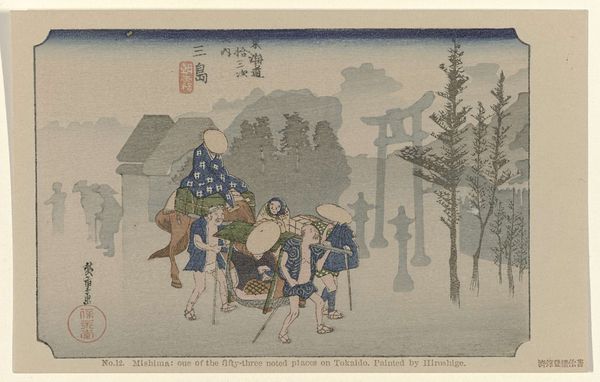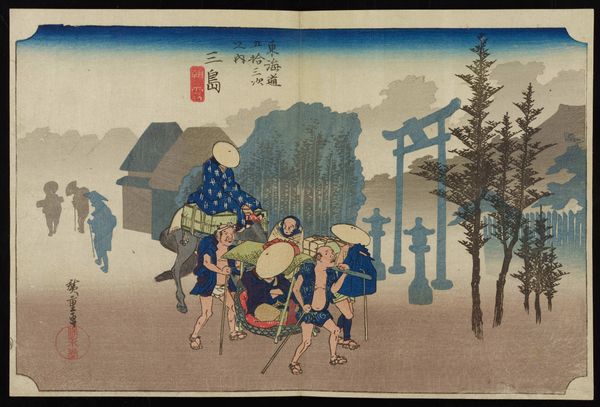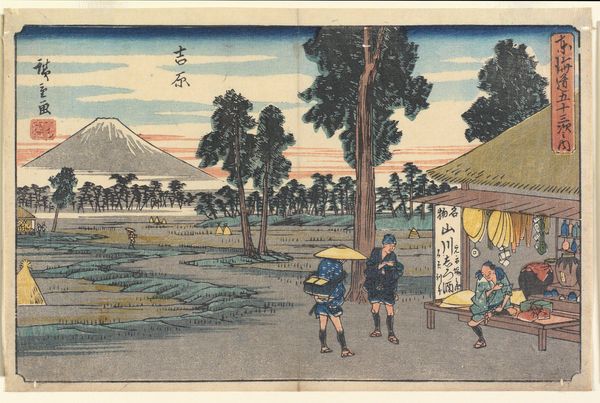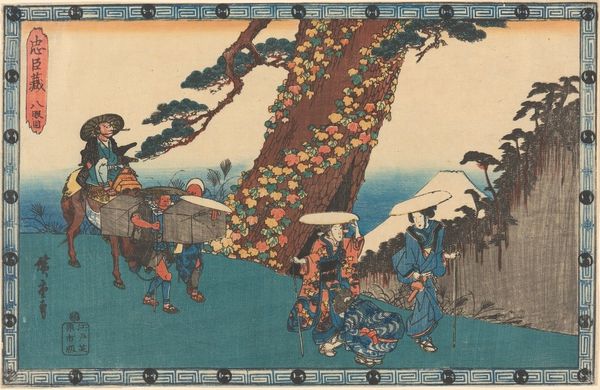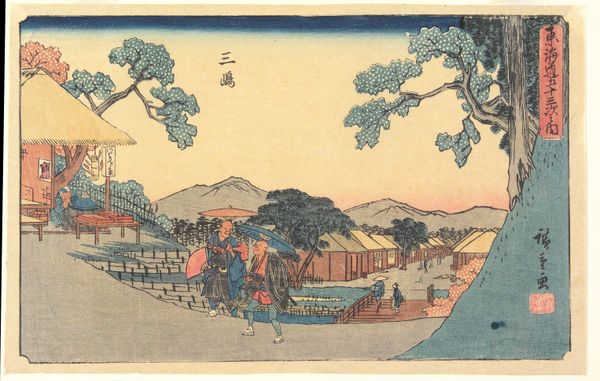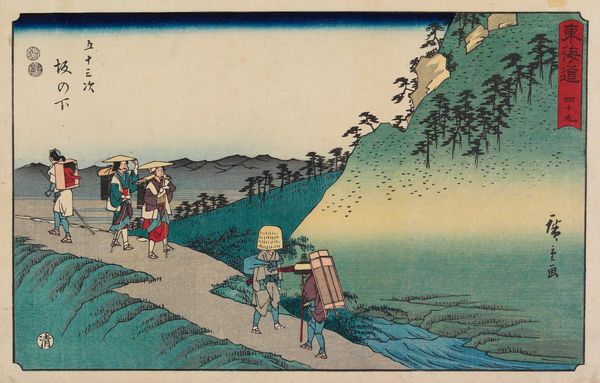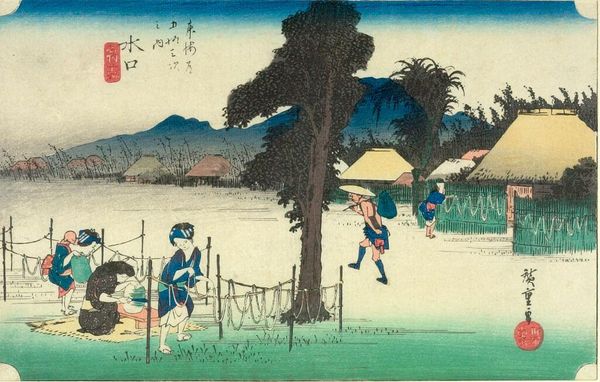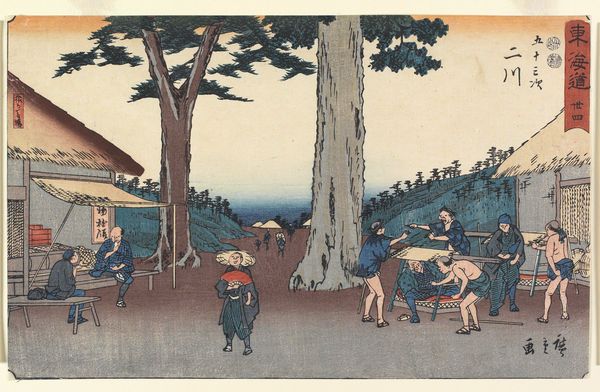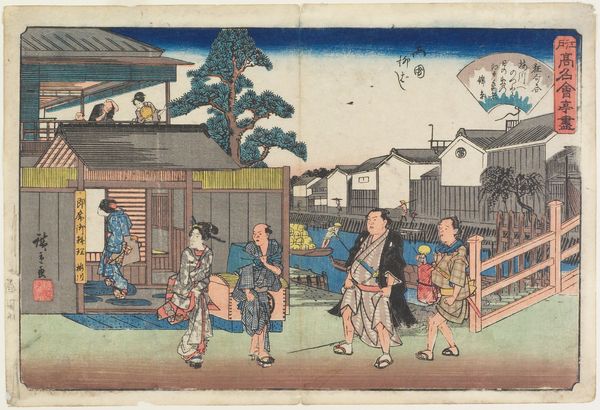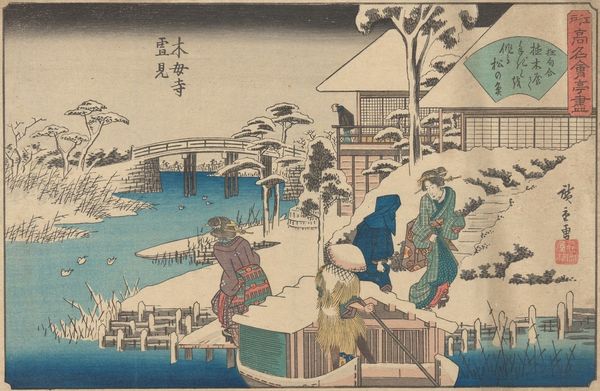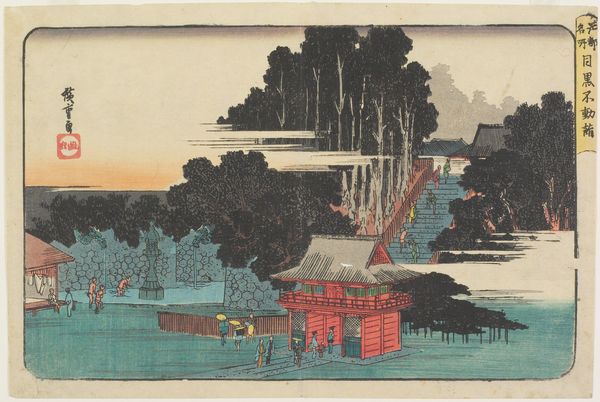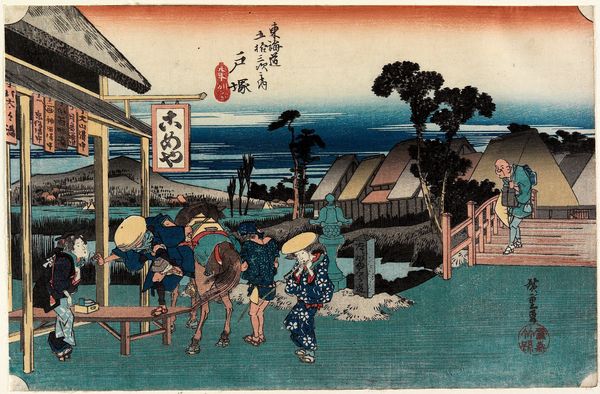
Copyright: Public Domain: Artvee
Editor: This is "Three Ronin on Road," a woodblock print by Utagawa Hiroshige, dating back to the 19th century. I'm immediately struck by the weariness of the figures and how it contrasts with the idyllic landscape around them. How do you interpret this work? Curator: That contrast is key. Consider the historical context. The Ronin, masterless samurai, often occupied a liminal space in Japanese society. They were figures of potential disruption but also of loyalty and resilience. How does the landscape, which you describe as idyllic, actually reinforce their marginalization? Editor: Well, the landscape seems peaceful, indifferent almost. The Ronin are trudging through it, burdened. Is the landscape representative of the society that displaced them? Curator: Precisely. Hiroshige uses the Ukiyo-e tradition of landscape not just to depict a pretty scene but to subtly comment on social dynamics. The blurred figures and impressionistic feel could signify their fading status or the blurring lines of identity after losing their position. Think about the print medium itself. Who was this art intended for? Editor: It feels like this print offers a kind of accessible social commentary. Ordinary people looking at the lives of others struggling within a certain societal structure? Curator: Exactly. Ukiyo-e prints weren’t aimed at the elite, they spoke to the burgeoning merchant class, depicting actors, courtesans, landscapes, but also, crucially, the realities and struggles of different social strata, allowing for empathy and maybe even a reflection on their own place in the social hierarchy. Editor: That’s fascinating! I hadn’t considered how the medium and intended audience informed the message of the piece. Thanks for pointing out that this piece serves as commentary as much as it's just descriptive! Curator: Art serves to expand how we see others within our culture and our social standing within that culture, and how the intent and action of that art expands out in different ways. It allows us to place historical pieces with our own struggles of today.
Comments
No comments
Be the first to comment and join the conversation on the ultimate creative platform.
